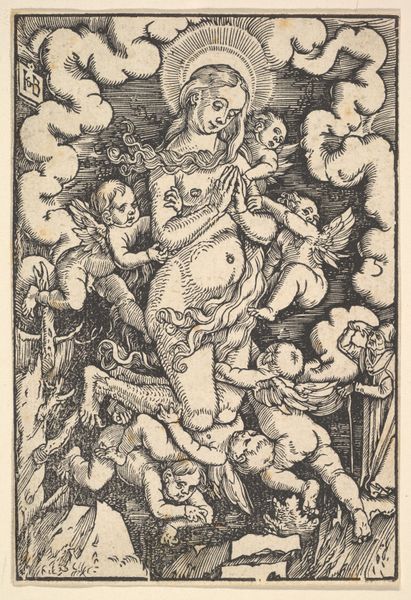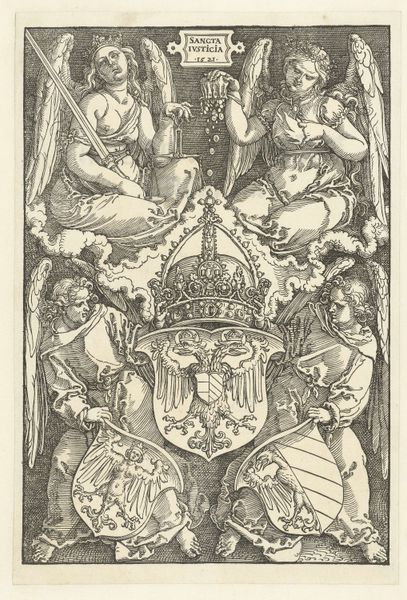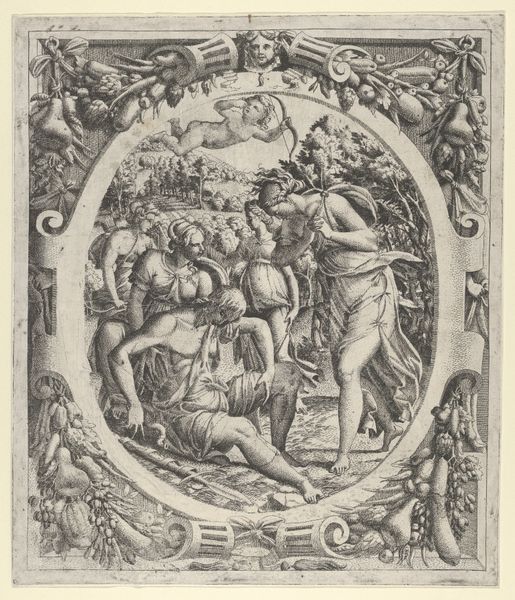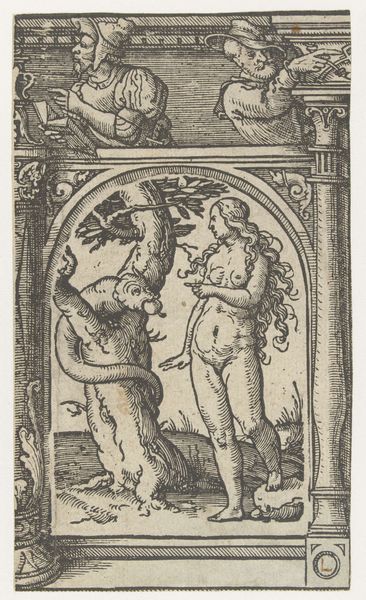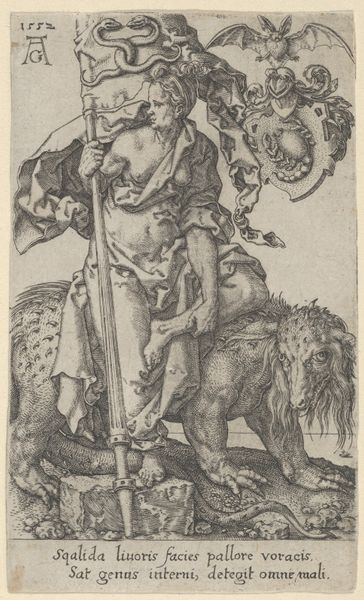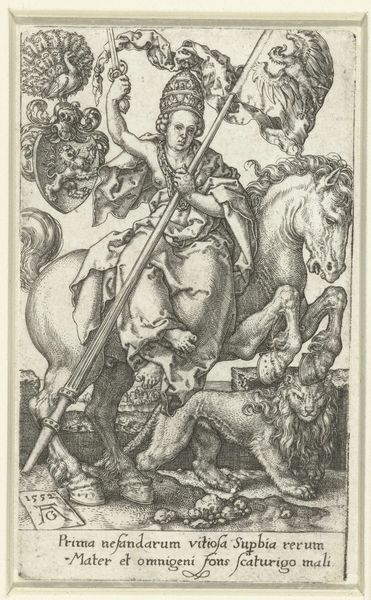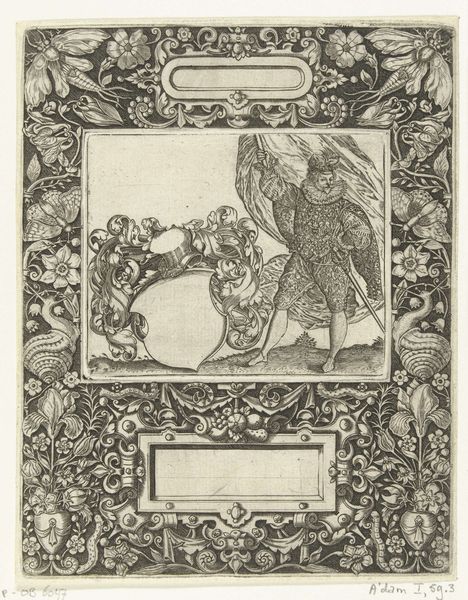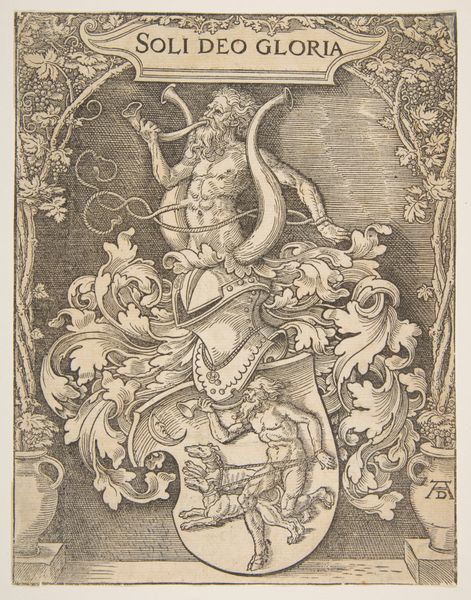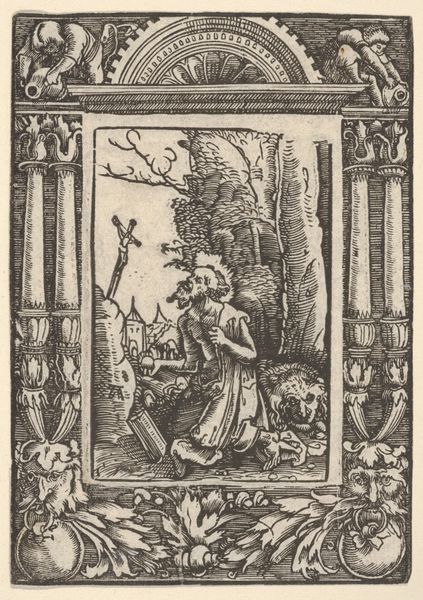
drawing, graphic-art, print, ink, woodcut
#
portrait
#
drawing
#
graphic-art
#
pen drawing
# print
#
pen illustration
#
figuration
#
ink line art
#
11_renaissance
#
ink
#
woodcut
#
line
#
northern-renaissance
Dimensions: height 298 mm, width 203 mm
Copyright: Rijks Museum: Open Domain
Curator: The linework is so incredibly precise! This black-and-white print evokes a feeling of heraldic authority. Editor: Indeed. Here we have a closer look at "Wapens van de families Scheurl en Tucher," or "Coats of Arms of the Scheurl and Tucher Families," originating likely between 1512 and 1560. It's attributed to Albrecht Dürer and resides in the collection of the Rijksmuseum. Curator: Note how Dürer contrasts the delicate linework of the central female figure with the almost grotesquely detailed animalistic supporters of the heraldic shields. The varying textures are particularly impressive given the medium. Editor: Absolutely. It's important to understand the historical context here. These coats of arms would have been crucial identifiers, symbols of power and lineage in the complex social hierarchy of the Renaissance. Dürer, as a celebrated artist, would have been commissioned to legitimize the status of these families. Curator: The semiotic weight of the images is dense. The unicorn and bull aren't just decorative; they are packed with allegorical significance. Also, the top includes Latin text, along with what appear to be grapes and a double headed eagle. It suggests familial harmony and wealth. Editor: And let's not overlook the depiction of the Moor's head on one of the shields. This raises questions about the family's trade connections and perhaps the colonial dynamics of the time. It speaks to the global reach of these powerful merchant families, even in the early 16th century. Curator: There's a tension between the rigidity of the heraldic symbolism and the dynamism of Dürer's artistic style. Notice how he manages to imbue the image with a sense of movement despite its formal nature. Editor: This print underscores how art functioned as a form of social currency and political maneuvering in the Renaissance. Dürer's craftsmanship was not just aesthetic; it was integral to shaping the social narratives of his era. Curator: Precisely. Examining the composition closely unveils Dürer's understanding of visual communication. It's an impressive display of both technical mastery and artistic intent. Editor: Considering how carefully images were crafted and disseminated offers a valuable lens for understanding the society that produced them. It gives us insight into the families, power dynamics and trade happening during that era.
Comments
No comments
Be the first to comment and join the conversation on the ultimate creative platform.

